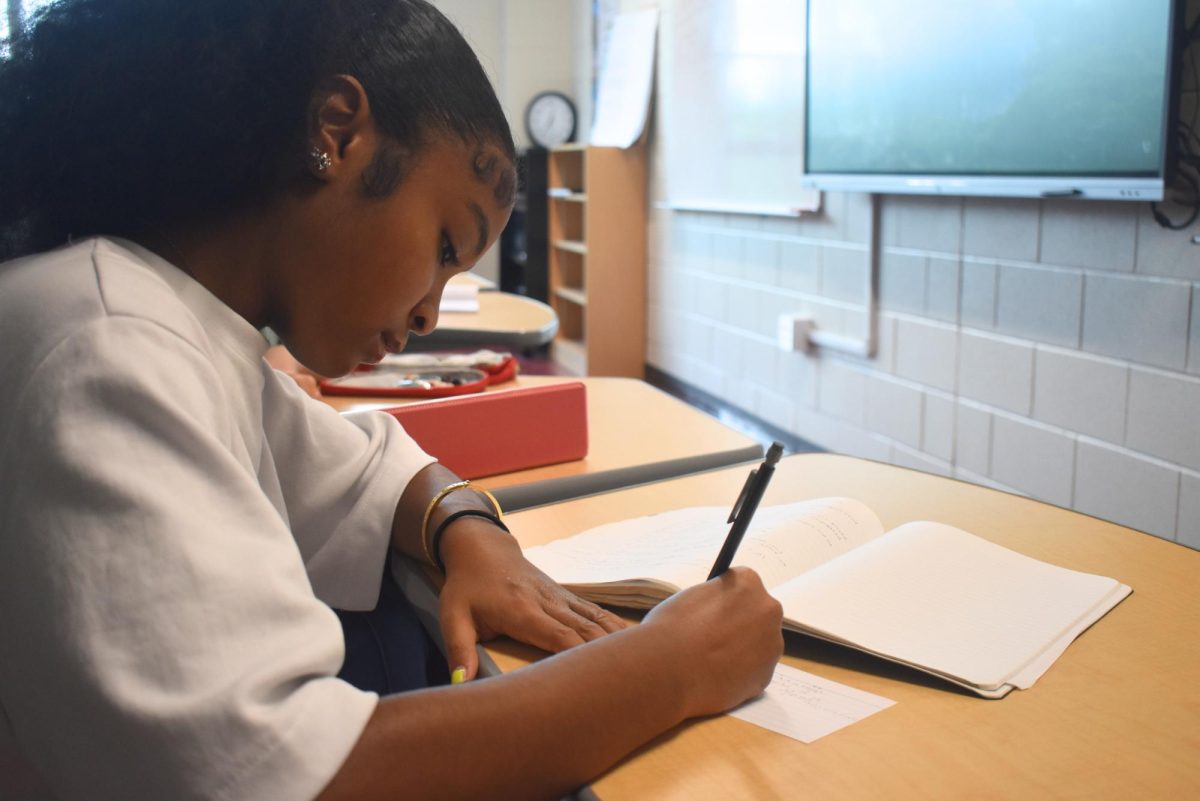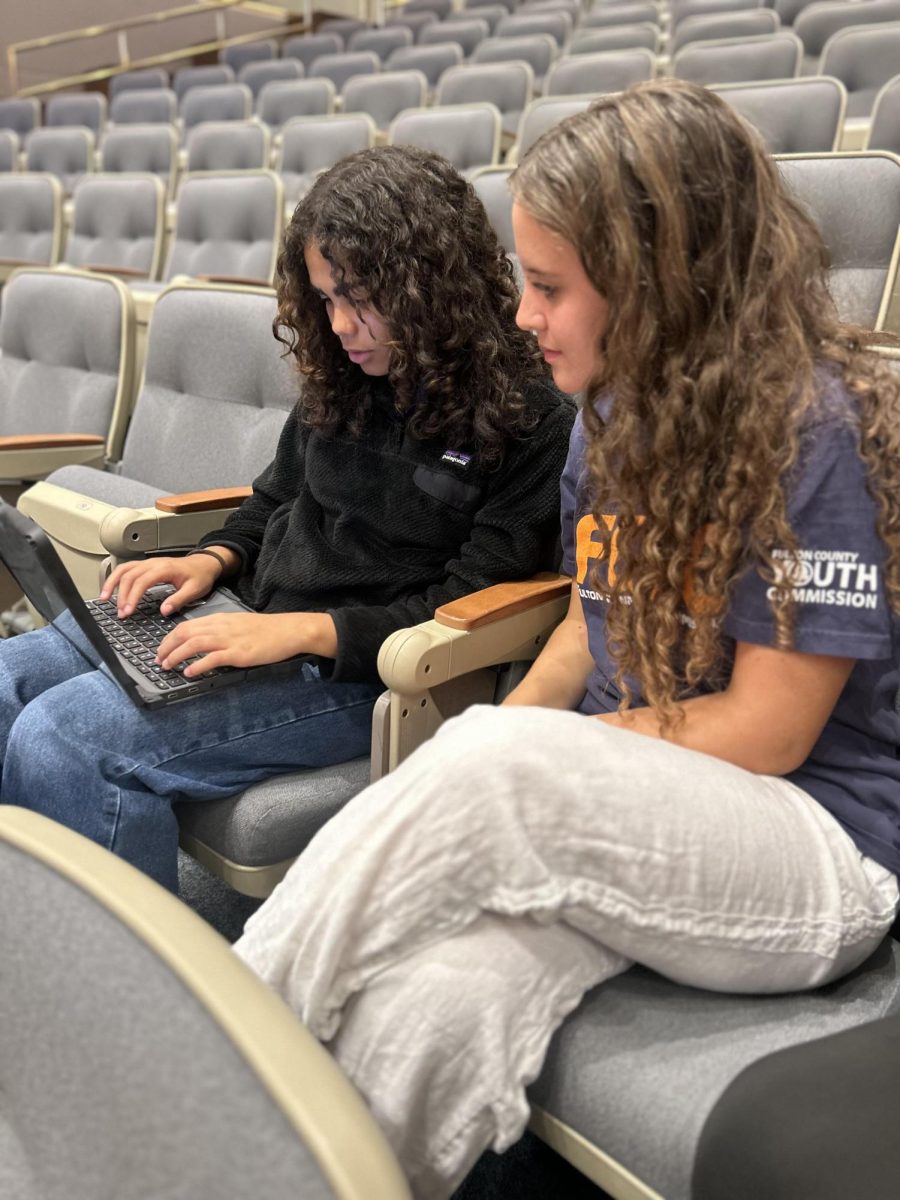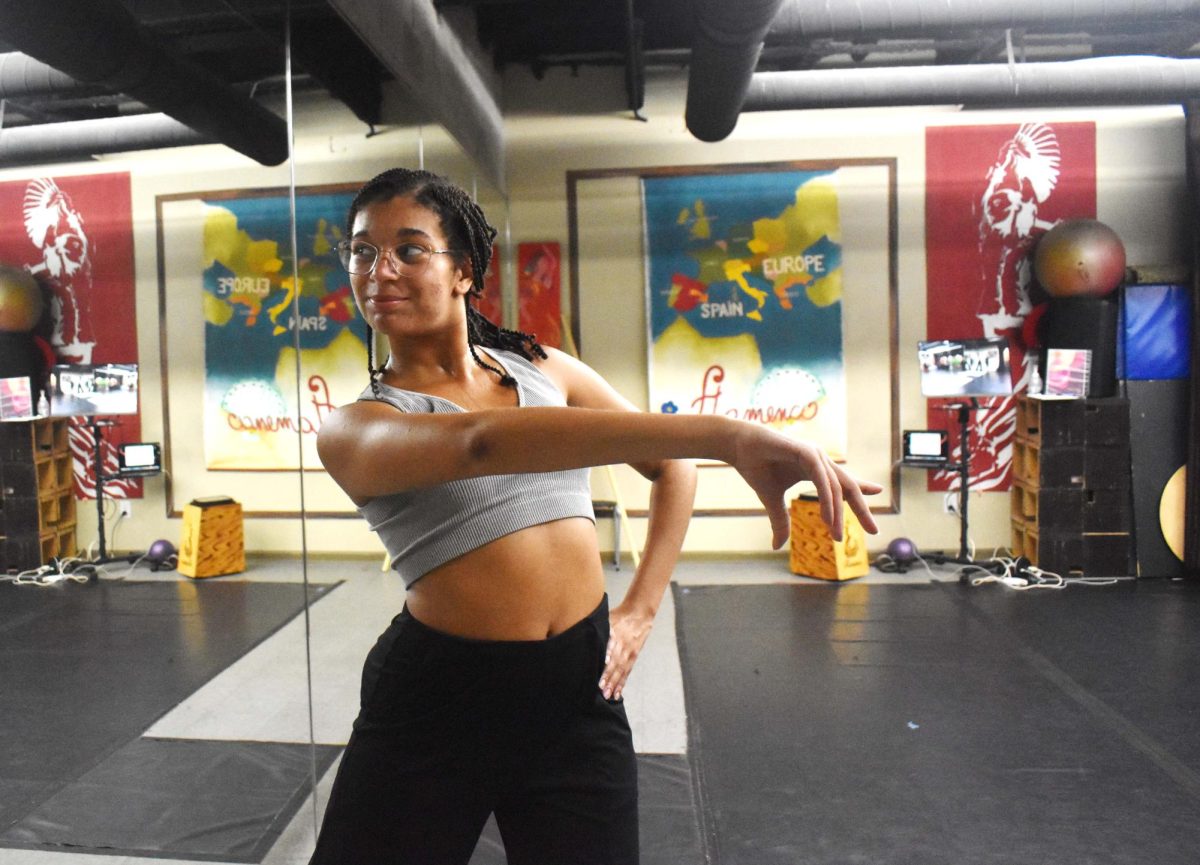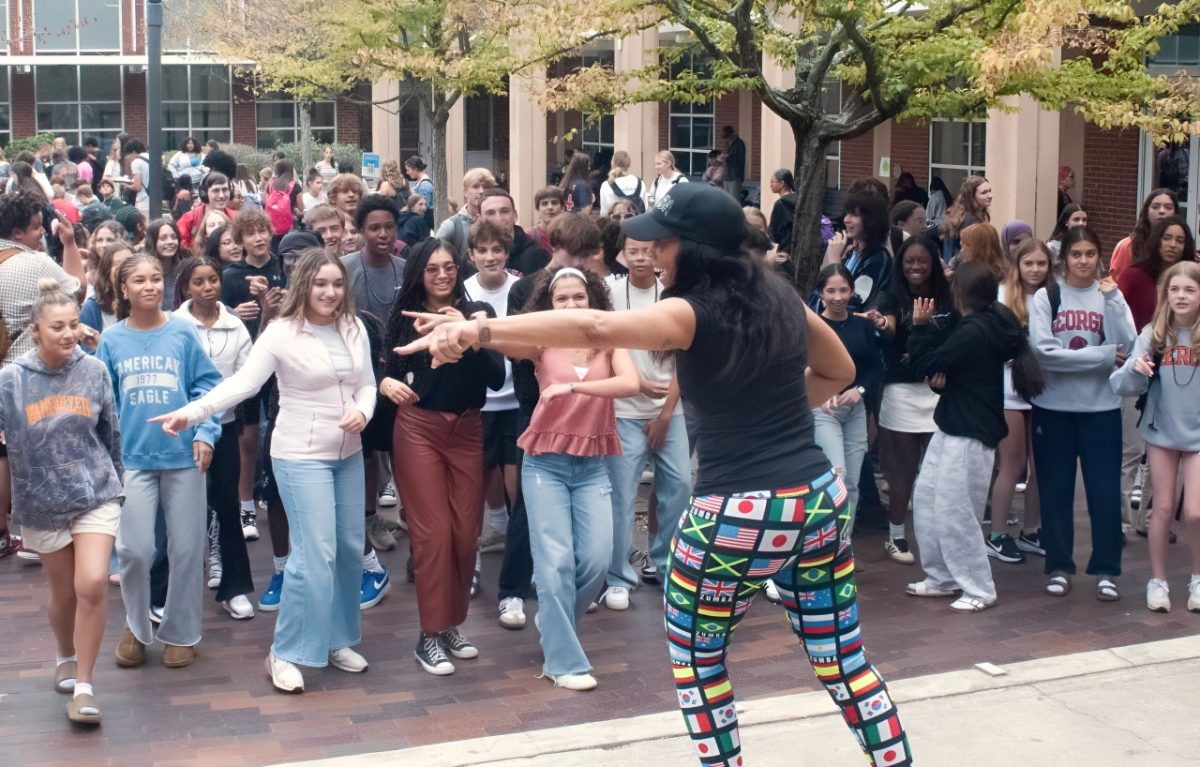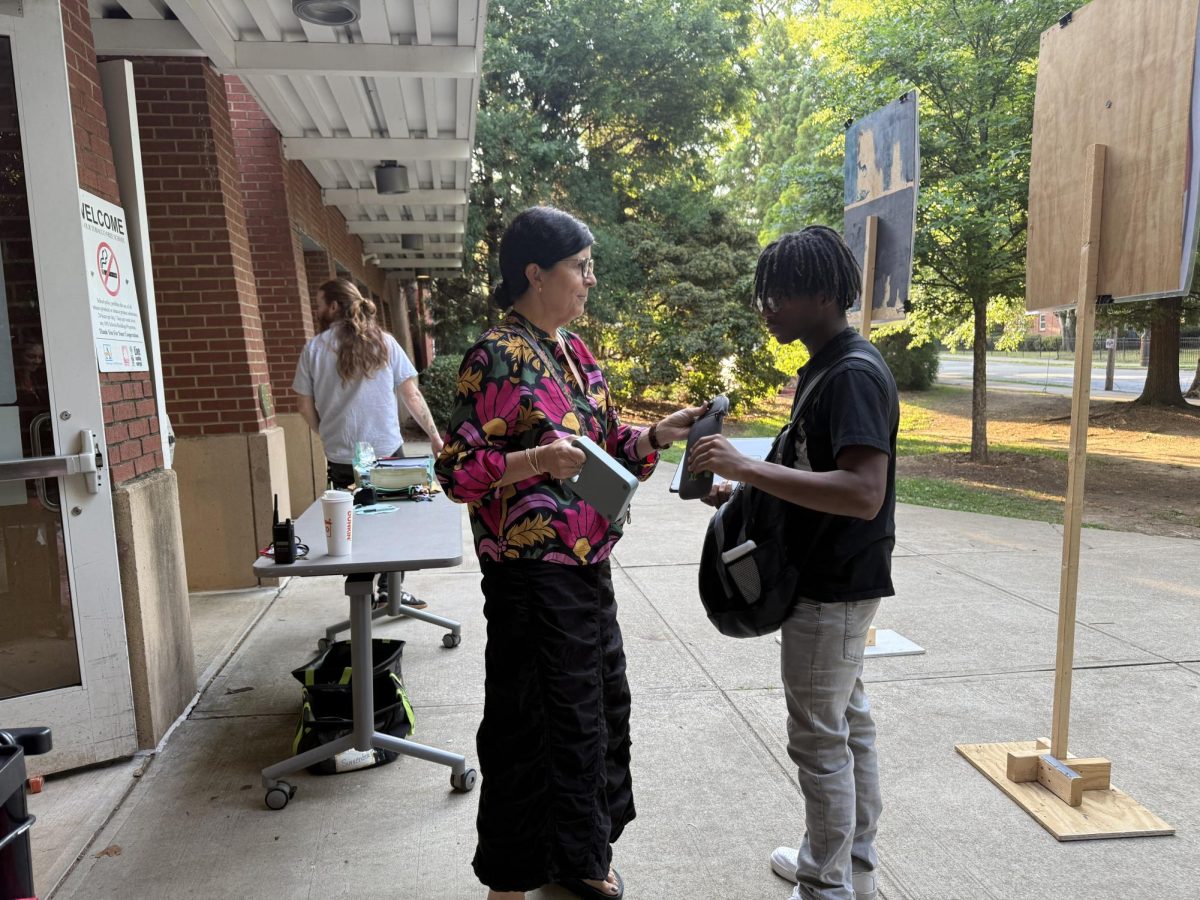Spanish 3 and 4 classes will be combined for the first time this year. French has followed this model for a few years, giving students experience with mixed-level learning.
“Honestly, being in a combined French class has been a good experience,” sophomore Rashad Grant, a French 3 student, said. “It gives me an opportunity to challenge myself and gives me great access to upperclassmen who can help me when I am struggling.”
Over the years, some French students have had mixed reactions to combined classes. The change from a single-level French 2 class to a mixed-level French 3 and 4 class can require an adjustment period.
“I love how we get kind of a preview of French 4 this year to see if we want to continue the pathway next year,” sophomore Estelle Leege, a French 3 student, said. “But, I dislike how we have to split instruction time because sometimes I look for more time to get a better understanding of the content.”
Four classes combine Spanish 3 and 4, and Spanish teachers are adjusting to the new setup, especially after Spanish teacher Wendy McBurney left the department last year.
“This year we lost one Spanish teacher, Ms. McBurney,” Spanish teacher Silvia Fuksman Riet said. “She is a great teacher and we will miss her this year.”
Riet and Spanish teacher Victoria Goya Pacheco each teach two combined-level classes. Goya said she finds it to be a big change from teaching single-level classes, but they will be trying to give students the best education possible this year.
“It is definitely an adjustment this year,” Goya said. “I will be trying out numerous teaching methods in order to maximize class time while still being able to go in depth with the allotted class time.”
Riet said she is unsure why there are mixed-level level classes.
“I’m not sure why there are conjoined classes,” Riet said. “It could be possible scheduling conflicts due to seniors and juniors having early release because all of my conjoined level classes are in the morning.”
Like any change, Riet said there are pros and cons to adopting combined Spanish classes.
“I think my conjoined classes are truly at a disadvantage,” Riet said. “It causes both levels to progress at a slower rate than if they were in a class with only their level.”
Riet said it is a struggle to give students the most attention possible in the mixed-level classes because there are only two ways to do it. The teachers either have to split class time between the two or teach everyone the same things and risk hindering their progression.
“There are only two ways to go about teaching these conjoined classes,” Riet said. “Either split the class time or teach both levels the same topic, both are very detrimental to the students’ progression.”
Exemplifying teachers’ worries, sophomore Suannah Patton believes she is unable to learn as well in conjoined classes.
“I don’t like being in a conjoined class,” sophomore Susannah Patton said. “I like to ask my teachers lots of questions and I like to go in depth with my learning which I am unable to get in conjoined classes.”
Riet said a combined system is not fair to students.
“Students deserve the best possible education and they don’t get that in conjoined classes,” Riet said. “We still make it happen but the negatives definitely do outweigh the positives.”

